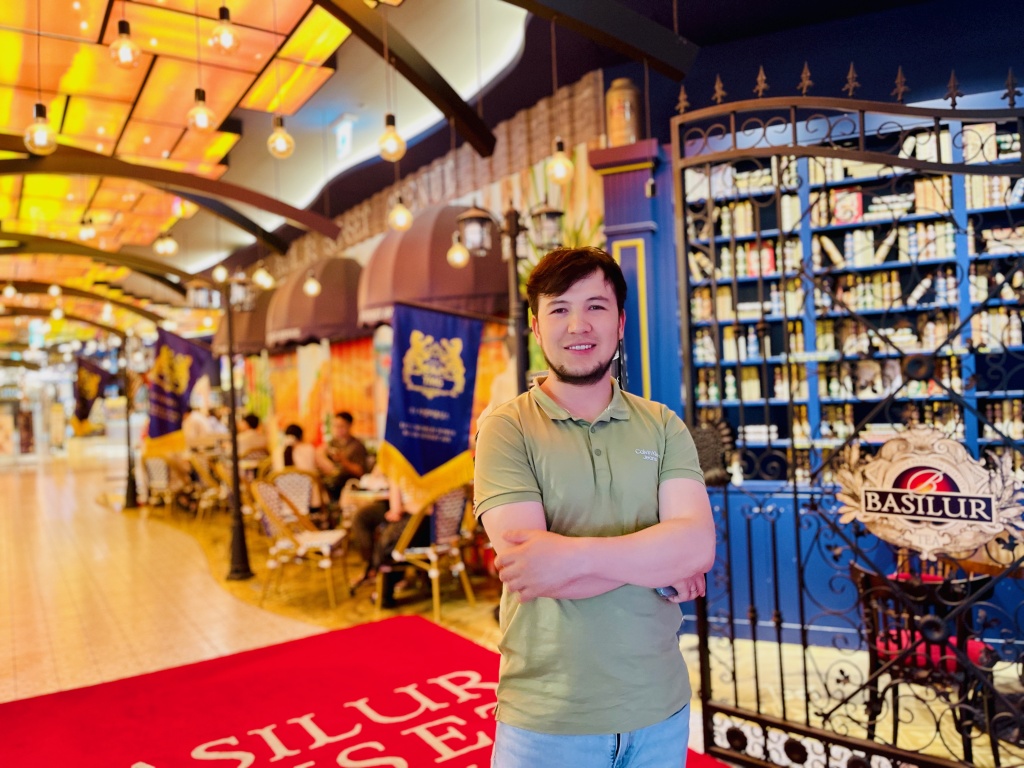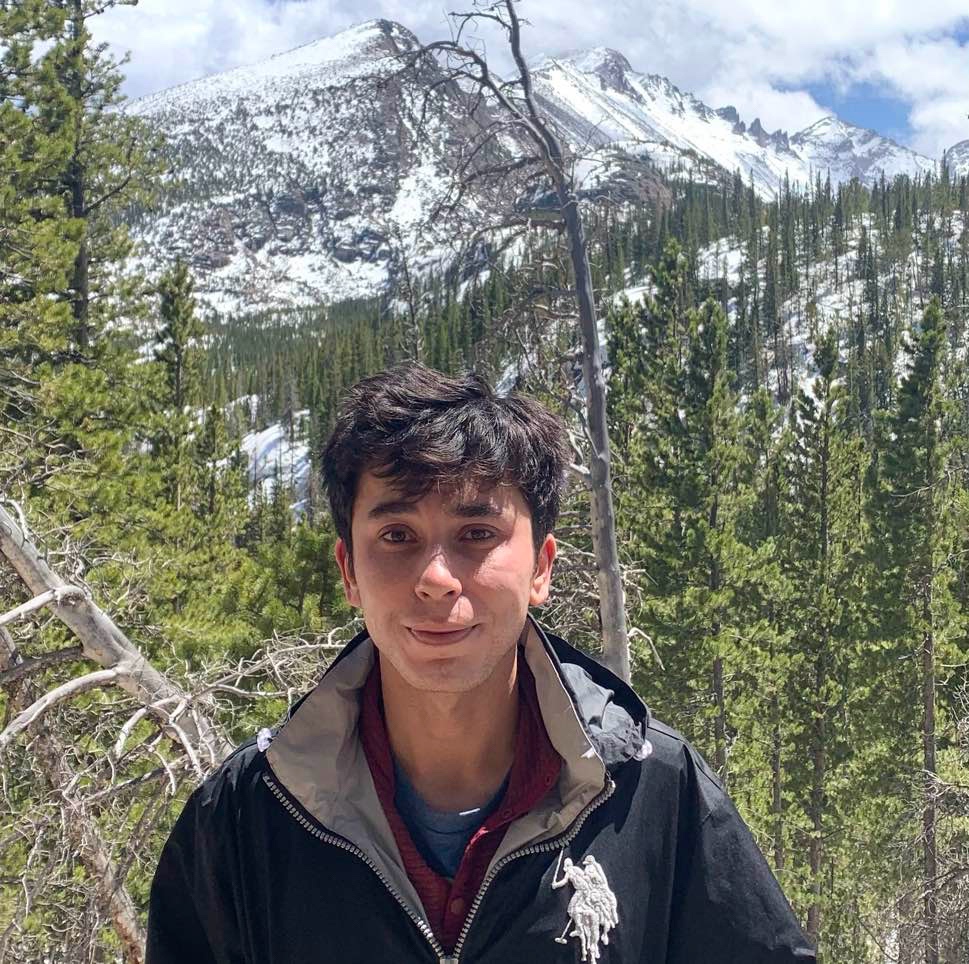NVIDIA is a global tech powerhouse — one of the most sought-after employers for top talent worldwide. We spoke with professionals from Central Asia about how they landed jobs at NVIDIA and what sets the company’s culture apart.
Mudin Ibragimov, Seoul, Software Engineer, LinkedIn

About me
I earned my bachelor’s degree in Information Technology from the Tashkent University of Information Technologies and later completed a master’s degree at Kookmin University in South Korea. I specialized in underwater communication and microcontroller-based robotics — skills that helped me develop a strong foundation in systems design and solving complex problems.
From a young age, I was fascinated by geometry, visualization, and programming, which naturally led me to pursue 3D technologies. My professional journey began at 3i Inc., where I developed AR/VR platforms, digital twins, and 3D visualization tools.
How I got into NVIDIA
One day, I came across a LinkedIn job posting for a Fullstack Software Engineer – 3D Visualization. It was a perfect match for my background, so I applied. Soon after, a recruiter from NVIDIA reached out.
The interview process began with a phone screen focused on my experience, open-source projects, and a mid-level coding challenge. The second interview was more technical, with theory-based and advanced problem-solving questions.
The final round was held online and consisted of three parts:
System design and programming tasks
Technical questions from my future manager about Lidar, 3D cameras, and complex algorithms
An interview with a manager from another team who asked about my experience and gave me a binary tree challenge
The last step was an HR interview covering company culture, expectations, and career growth.
My skills in 3D visualization, regular practice on LeetCode, coding competitions, contributions to open-source, and a commitment to continuous learning were key to landing the job.
My career at NVIDIA
I’ve been working at NVIDIA since September 2021 as a Senior Software Engineer. I build 3D annotation tools for the NVIDIA DRIVE platform, which supports the development of autonomous vehicles. My work involves enhancing 3D visualization workflows, developing interactive tools using technologies like Three.js, WebGL, and TypeScript, and optimizing 3D annotation pipelines to improve data quality for AI training.

Over time, I’ve become more involved in Lidar technology and improved annotation tools by closely collaborating with the machine learning and computer vision teams.
What makes NVIDIA unique
What I value most at NVIDIA is its culture of innovation and collaboration. The environment encourages engineers to think big, experiment, and push boundaries. A few standout aspects:
— cutting-edge technologies. Every day I work on projects involving autonomous driving, AI, and 3D graphics, making the work both exciting and challenging
— world-class colleagues. I’m constantly learning from some of the best engineers in the world
— freedom and ownership. Engineers are empowered to manage their work, try new ideas, and contribute to breakthrough technologies
— work-life balance. While the job is demanding, NVIDIA supports a flexible and balanced work culture that helps maintain well-being and productivity
Of course, the bar is high — expectations are demanding and the work can be intense. But for those who enjoy tackling complex problems, it’s a great place to grow.
Why I chose NVIDIA
To me, NVIDIA represents the pinnacle of innovation in AI, GPUs, and autonomous systems. The company aligns perfectly with my interests, and I knew I could grow and learn alongside the industry’s top minds. The chance to work on autonomous vehicle technology was simply too exciting to pass up.
Advice for aspiring NVIDIA engineers
If you want to work at NVIDIA, make sure you have a strong foundation in data structures, algorithms, and system design. Practical experience in AI, graphics, or cloud technologies is a plus. Regular practice, contributing to open-source, and networking can boost your chances. Be prepared for rigorous technical interviews.
Future plans
I plan to deepen my expertise in AI and 3D visualization to help make autonomous systems smarter. I hope to take on leadership roles, mentor junior engineers, and drive technical innovation. I also aim to contribute more to open-source and share knowledge with aspiring engineers.
In the long run, I want to help shape the future of autonomous systems and 3D technology — and inspire more people from Central Asia and beyond to pursue careers in high-tech fields.
Daler Asrorov, Washington, D.C., Senior Software Engineer, LinkedIn

About me
I moved to the U.S. in 2012. I started at a small college in Northern Virginia and later transferred to the University of Southern California, one of the top schools in engineering and computer science. I earned my bachelor’s degree in Computer Science with a GPA of 3.7 out of 4.0.
During my studies, I interned at companies like SpaceX and Disney. After graduation, I joined Eventbrite, where I worked on their payments system. I switched jobs a few times to find what truly interested me, which ultimately led me to NVIDIA.
My career at NVIDIA
I joined NVIDIA in January 2021 as a Software Engineer and was promoted to Senior Engineer two years later. My work spans both backend and frontend development, using Python and PyTorch for machine learning, and React and JavaScript for UI development.
I’ve been with the company for over four years now and plan to stay to continue innovating in AI and machine learning. I currently work on LLM models that optimize browser performance in Chrome and Safari.
What makes NVIDIA unique
What I love most is the fast-paced environment and constant innovation. New, groundbreaking projects emerge almost weekly — sometimes even daily. The engineers here are truly world-class, and I’m constantly learning from my colleagues. I’m inspired by the energy and dedication to building next-generation AI and ML solutions.
Why I chose NVIDIA
Growing up in Tajikistan, I was a huge gamer. At 14, I bought my first NVIDIA graphics card — GeForce RTX — using all my savings just to play the latest games. Years later, when I saw a job opening at NVIDIA on LinkedIn, I felt a wave of nostalgia and excitement and applied immediately.
The hiring process was tough: eight rounds of interviews, each with 30-45-minute problem-solving sessions. But when the offer came, I didn’t hesitate — it was a dream opportunity to work on cutting-edge projects and grow within an elite team.
Advice for aspiring NVIDIA engineers
Find the kind of work that genuinely excites you. Forcing yourself into a field you don’t enjoy won’t work long term. You don’t have to be an engineer at NVIDIA or any top tech firm to make an impact — what matters most is following your passion and striving to be the best in that space.
For me, math and programming were key. I didn’t like math as a kid, but after learning more about its potential and talking to inspiring people, I saw its value. I took every course I could, read tons of books, and became a strong mathematician first — and then a skilled engineer.

It’s important to figure out what you want to do, or at least move in that direction. Mistakes are part of the process, but every failure is a step toward success. Trust your instincts — they’re powerful tools for making the right choices.
And finally, surround yourself with people who push you forward, not hold you back. Being around curious, knowledgeable people will naturally help you grow. In the end, your goal should be to serve others and become a professional in your field. If people respect your opinion and turn to you for advice, you're on the right path.
One last thing: minimize your time on TikTok, Instagram, and similar apps. Not everyone deserves your time. Use it wisely.
Future plans
I plan to continue working on AI and ML projects at NVIDIA. My goal is to grow in my engineering career and eventually become a lead engineer, managing projects and shaping key technical decisions. I’m not currently considering other companies because I believe NVIDIA is at the forefront of AI development.